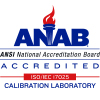
First developed in the late 1950s, the HACCP system was designed to ensure quality and food safety for NASA’s manned space program. Decades later, HACCP has become a fundamental factor for not only the food industry, but cosmetics and pharmaceuticals as well.
Derived from Hazard Analysis and Critical Control Points, HACCP is a systematic approach to avoiding biological, chemical and physical hazards. Rather than waiting for the finished products to be inspected, HACCP is implemented throughout all stages of the food chain to identify hazards during production, packaging and distribution.
HACCP originally consisted of three principles (now listed as one, two, and four), but by 1997, the seven HACCP principles below became the standard.
1. Conduct a hazard analysis
Compile a list of hazards that are likely to cause injury or illness if they are not effectively controlled. Consider the biological, chemical and physical ingredients and raw materials incorporated into each step of the production process, storage, distribution and consumer use. For each hazard, apply a preventative measure to control the hazard.
Note: objective is to identify hazards and control methods, modify process or product to improve safety, provide basis for determining critical control points
2. Determine critical control points
Potential hazards must be addressed at the critical control point (CCP), defined as the step in the production process at which control can be applied to prevent, eliminate or reduce a food safety hazard to an acceptable level. One way to help identify each CCP is the use of a CCP decision tree.
Note: examples include thermal processing, chilling, testing ingredients for chemical residues and metal contaminants
3. Establish critical limits
A critical limit is the maximum and minimum value at which a biological, chemical or physical hazard must be controlled at a critical control point to prevent, eliminate, or reduce that hazard to an acceptable level. Critical limits are used to verify safe operating conditions at a CCP and must be scientifically established.
Note: determine factors include time, temperature, physical dimensions, humidity, moisture level
4. Establish monitoring procedures
A strict monitoring schedule is necessary to validate that a CPP is under control and for future verification use. Monitoring provides management with the ability to track operations and take immediate control of a product before deviation occurs. Due to the potentially serious consequences of a critical limit deviation, continuous or frequent monitoring is advised to ensure the process is properly controlled.
Note: the FSIS requires that each monitoring procedure and its frequency be listed in the HACCP plan
5. Establish corrective actions
The purpose of corrective actions is to prevent food which may be hazardous from reaching consumers. When monitoring indicates a deviation from the established critical limit, the corrective action should be taken.
Note: this step includes determining the cause of non-compliance, the disposition of a non-compliant product and a record that corrective actions have been taken
6. Establish verification procedures
Verification is defined as activities, other than monitoring, that validate a HACCP plan is being carried out effectively. FSIS requires the verification of a HACCP plan by plant personnel, which will also be performed by FSIS during inspection.
Note: examples include a periodic review of the HACCP plan, CCP records, critical limits and microbial testing
7. Establish record keeping procedures
HACCP regulation requires that all plants maintain specific documents that include: hazard analysis, written HACCP plan, records documenting the monitoring of critical control points, critical limits, corrective actions and verification activities.
Note: no scientific or technical support documentation for a decision in the hazard analysis for a CCP can lead to noncompliance with validation requirements
To view a step-by-step guide highlighting monitoring solutions to assist with HAACP compliance and reporting throughout the production process, click here.






